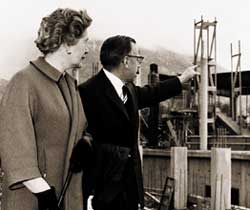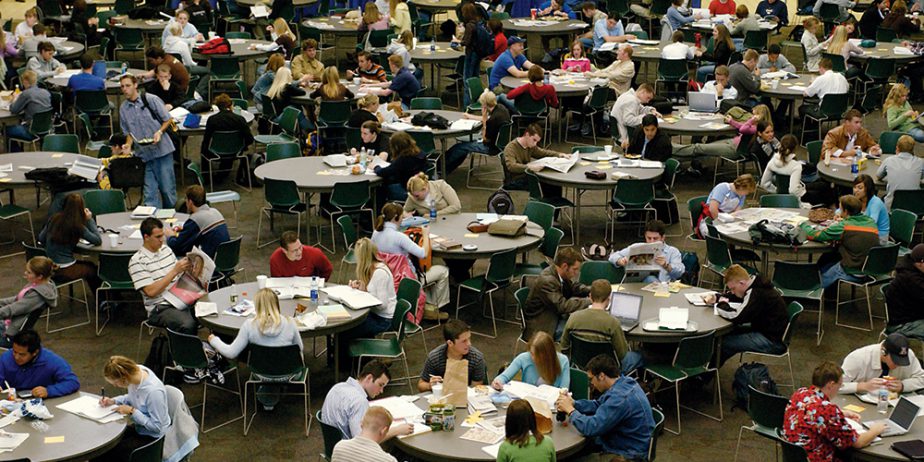By Jeff McClellan
In mid-November, chain-link fences and detour signs appeared around one of the busiest buildings on BYU campus in preparation for the long awaited and much-needed renovation of the Ernest L. Wilkinson Center.
After about eight years of planning, the project began as Gramoll Construction of Salt Lake City moved their equipment in and started tearing down the Memorial Lounge on the northwest corner of the building.
“The mechanical and electrical systems of this building are just shot,” says Richard S. Aland, an assistant director of Student Leadership Development. In addition to fixing the worn-out systems, the renovation will bring the 32-year-old building up to current safety standards and give it a complete face-lift.
“We want to provide a very interactive, busy student space,” says Aland, whose goal in the renovation is to make room for as many student services and activities as possible.
“We’re just trying to make better use of the space that we have,” says Brad W. Farnsworth, BYU’s administrative vice president. Farnsworth says the renovation will make it possible to consolidate all of the student services in one location.
Currently scattered across campus, student services such as the Counseling and Development Center, student employment and placement offices, and the internship office will be newcomers to the Wilkinson Center.
“We’ll have all of these functions right there in the Wilkinson Center,” Farnsworth says, “so it will truly be a student center.”
One change that will allow this consolidation is the new office wing that will be built where the Memorial Lounge stood. About the same size and shape as the old Memorial Lounge, the office wing will have one floor below ground and two above ground. It will house the Counseling and Development Center, Student Employment Services, the Placement Center, and student government offices.
The Memorial Lounge was decommissioned by the BYU ROTC units in October. A small lounge to be built at the east end of the building will be commissioned as the new Memorial Lounge. Other small lounges will be constructed throughout the building to replace the large lounge and TV room.
The West Court (the open-air patio between the old Memorial Lounge and the Cougareat) will be replaced by a large enclosed court. This court, referred to officially as the “flexible programming area,” will be open to walkways on the level above and into the Cougareat. It will be used for various student activities and as an overflow eating area.
The Cougareat will be renovated to make the serving areas more open and accessible, much like a food court in a shopping mall.
The Games Center will be reduced to the bowling alley and a small room for pool tables to make room for Outdoors Unlimited, which will move into the southeast corner of the first floor, providing easier parking access for its customers.
Many other services in the building will also be moved to new locations, Aland says, making them more accessible and efficient.
Aland projects the renovation to be finished early in 1998, although parts of the project will be done earlier. The Games Center and Outdoors Unlimited, for instance, are projected to be through with renovation this spring.
But the renovation isn’t going to slow things down at the Wilkinson Center, Aland says. “We’re going to keep everything open and running while we’re renovating.” To remain open, many services will have to move to temporary locations while their areas are renovated. For example, during the renovation of the kitchen and eating areas, from June 1996 to June 1997, food will be served in the ballrooms.
To help keep students and visitors informed of the constant changes, signs posted around the building indicate serviceable entrances and exits and areas currently under construction.
During construction, student traffic has dropped a little from the usual harried pace, Aland says. A few years ago, an official count reported that 35,000 people used the building during one day. But Aland hopes the renovation will change that–by making the number grow.
“We hope to increase that traffic,” Aland says. “We want the students here.”









